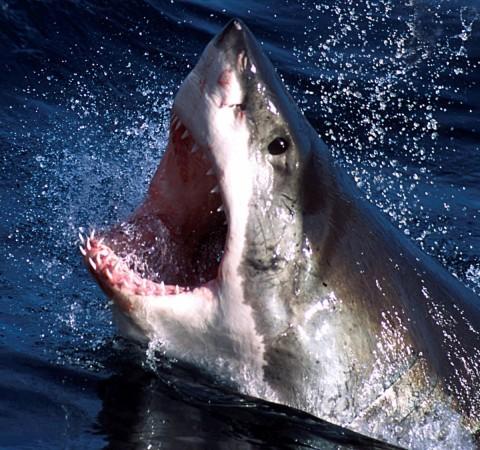
With the millions of people sitting behind keyboards and typing away their own versions of "facts", one can never be sure what is true and what isn't. Back in June, there were reports about a great white shark, being "savagely devoured" by a mystery creature off Australia's coast, went viral. It even spurred on a documentary, in which filmmaker David Riggs looked in to what mystery creature was responsible for the unnatural attack.
The 9ft (2.8m) shark was even the subject of the Smithsonian documentary Hunt for the Super Predator, which made headlines worldwide last month.
Experts had been tracking a shark off the coast of Western Australia when it suddenly disappeared and when a tracking device washed up four months later, analysis revealed that it had experienced a huge temperature change, from 7 - 25 degree Celsius in just a few seconds.
Scientists, claiming that such a temperature change could have occurred only if the shark had been eaten by another predator and ended up inside its stomach, suggested that it would evidence the existence of Megalodon, a 67-foot shark that is believed to be extinct.
There aren't too many other fish in the sea that could take out the majestic great white sharks and when theories surfaced about what mystery predator could have been capable of devouring a shark of that size, the obvious answer was the legendary Megalodon, which is thought to be extinct.
No one has been able to prove the existence or extinction of Megalodon, or that it ever swam in the deep seas. However, if there is a Megalodon alive today, the myths surrounding it clearly proves that it can devour a great shark with ease.
In "Something Ate This Shark...But What?", published on the Smithsonian YouTube Channel, explains the Great White Shark tagging project and how they concluded that Megalodon is to be blamed when one of the tracking devices washed ashore.
The Commonwealth Scientific and Industrial Research Organisation (CSIRO), Australia's National Science Agency, which made the tracking device, has since come out with an explanation that rubbishes the role of Megalodon in the killing of the great white shark.
"The temperature recorded... was consistent with that of the core body temperature of a white shark but too low for something like a killer whale," CSIRO said.
"At one point the tagged shark dived to a depth of 570 m – this is not unusual for white sharks – it is normal behaviour." Since white sharks biting each other is a usual occurrence, all evidences points towards that the tag being eaten by another white shark.
The most likely explanation the CSIRO has for this occurrence is that, "One shark bit off a little more than he could chew and ended up swallowing the tag."
In "Tagging juvenile white shark" CSIRO scientists can be seen fitting a juvenile white shark with an internal acoustic tag at Port Stephens in New South Wales.











